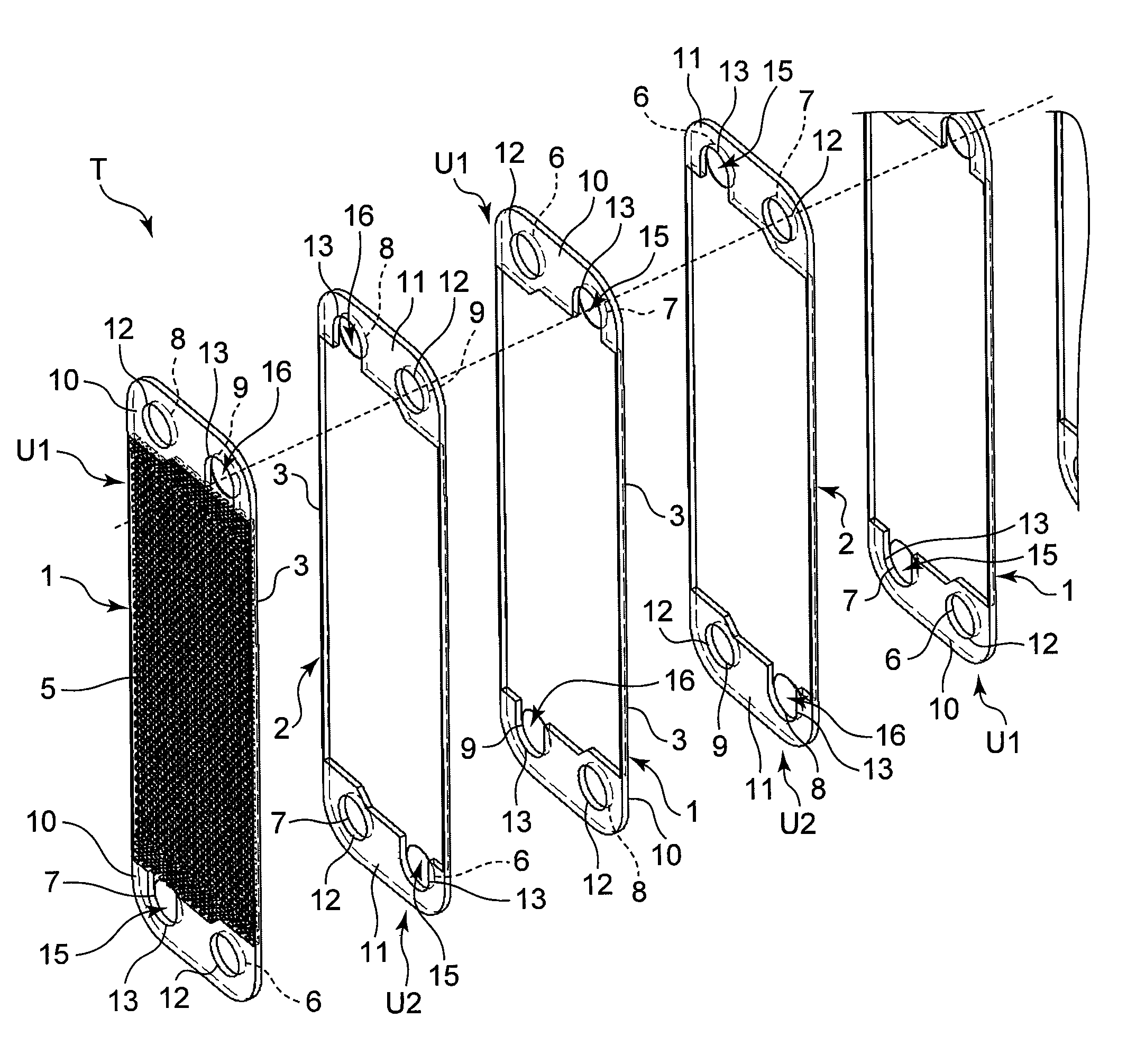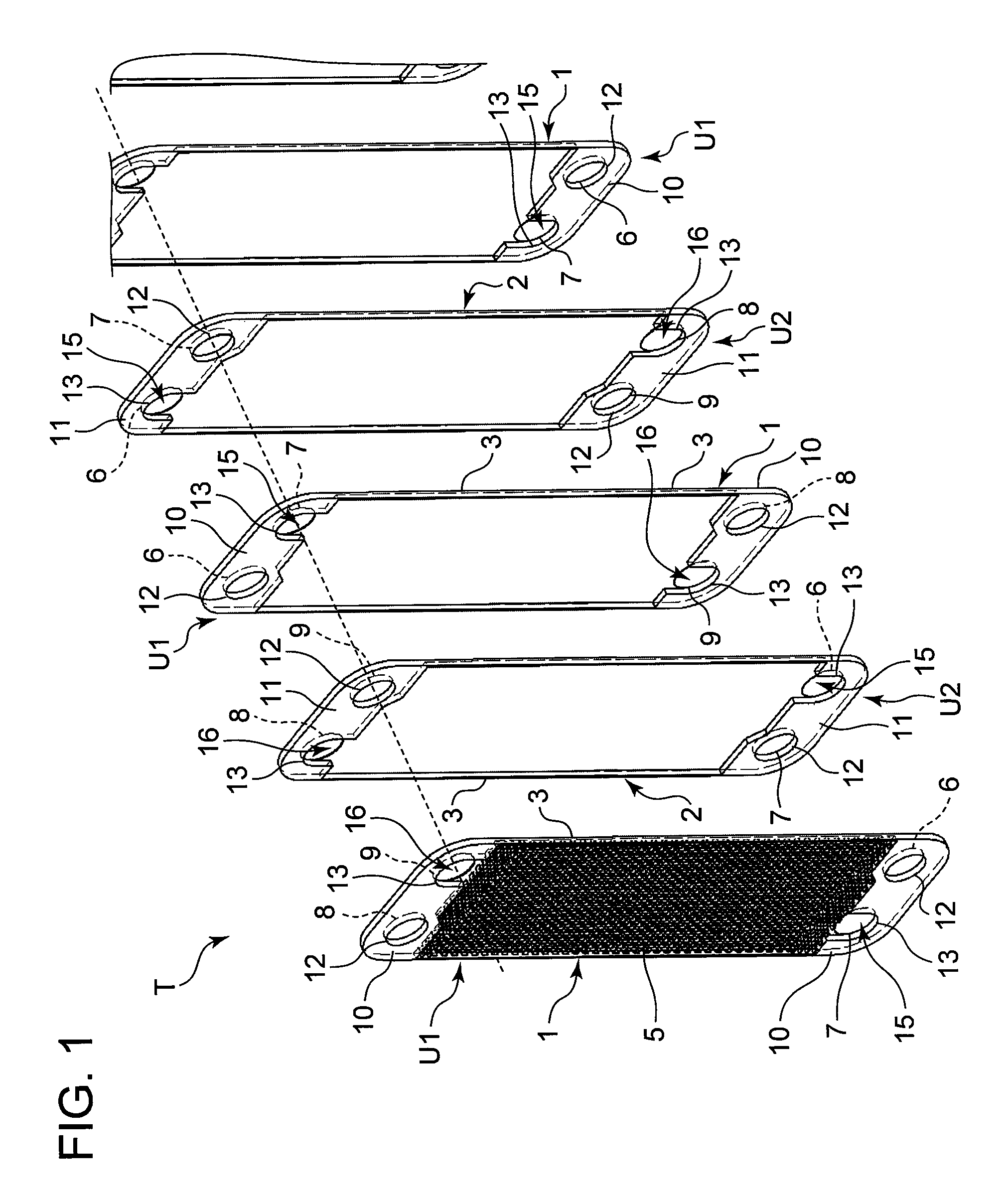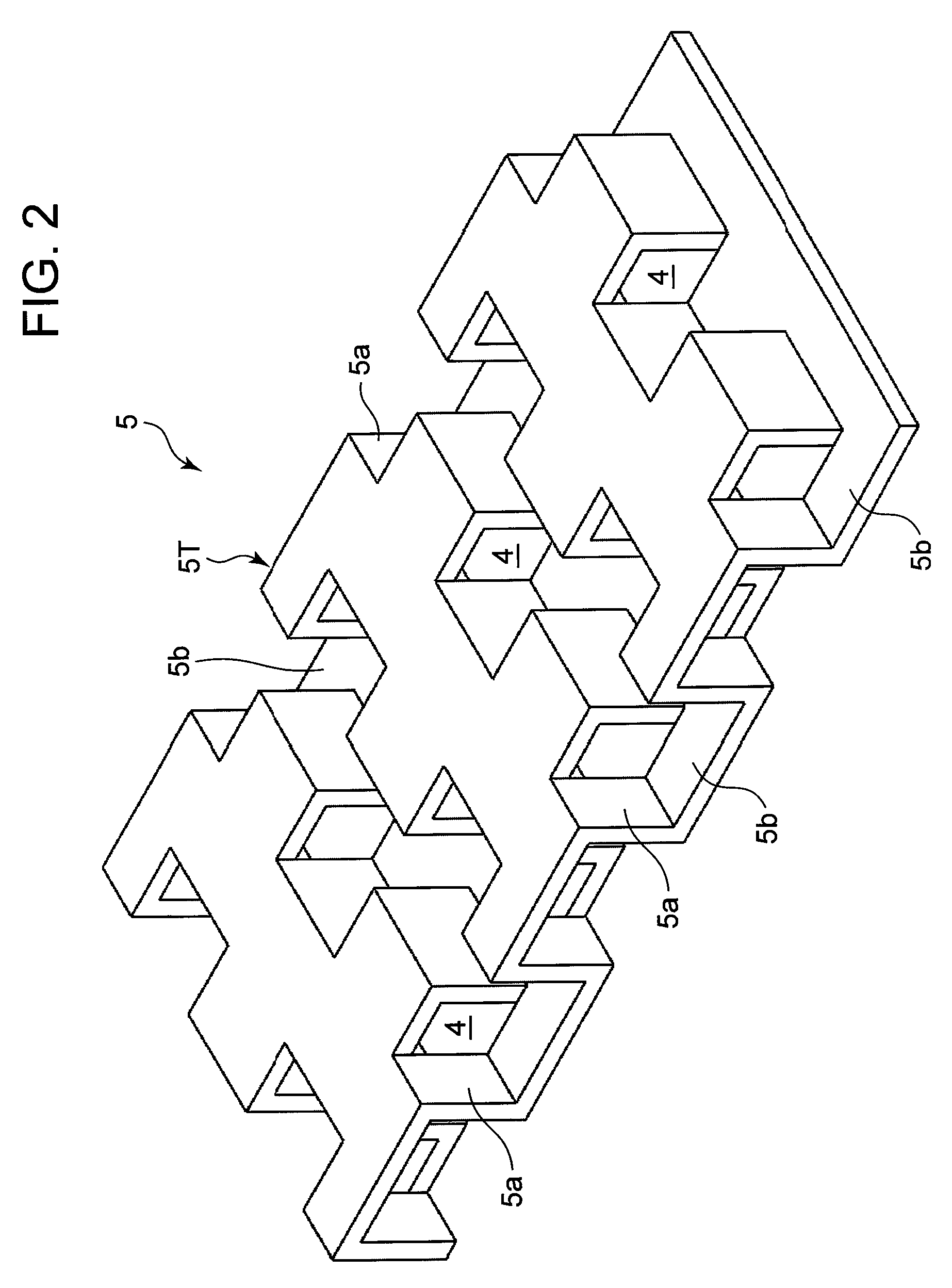Heat exchanger and manufacturing method of the same
a technology of heat exchanger and manufacturing method, which is applied in the direction of indirect heat exchangers, laminated elements, lighting and heating apparatus, etc., can solve the problems of pressure drop remarkably increased, and fluid not being easily dispersed in the whole flow path, so as to improve the non-uniform rate distribution, improve the heat exchange performance, and eliminate the effect of pressure drop in the fin parallel region
- Summary
- Abstract
- Description
- Claims
- Application Information
AI Technical Summary
Benefits of technology
Problems solved by technology
Method used
Image
Examples
Embodiment Construction
[0045]The present invention relates to a heat exchanger for performing heat exchange between fluids, and has been developed to eliminate a disadvantage that a pressure drop increases in a case where fins are arranged so as to cross fluid flow at right angles and to improve the drift of the fluid in a case where the fins are arranged in parallel with the fluid flow. A purpose of suppressing the pressure drop while improving the non-uniform rate distribution of the fluid is realized by disposing a fin orthogonal region where the fins cross the flow direction of the fluid from an inflow port to an outflow port at right angles and a fin parallel region where the fins are arranged in parallel with the flow direction of the fluid from the inflow port to the outflow port. Hereinafter, embodiments of the present invention will be described in detail with reference to the drawings.
[0046]FIG. 1 is a perspective view schematically showing a constitution of a heat exchanger of one embodiment of...
PUM
| Property | Measurement | Unit |
|---|---|---|
| pressure | aaaaa | aaaaa |
| pressure drop | aaaaa | aaaaa |
| pressure | aaaaa | aaaaa |
Abstract
Description
Claims
Application Information
 Login to View More
Login to View More - R&D
- Intellectual Property
- Life Sciences
- Materials
- Tech Scout
- Unparalleled Data Quality
- Higher Quality Content
- 60% Fewer Hallucinations
Browse by: Latest US Patents, China's latest patents, Technical Efficacy Thesaurus, Application Domain, Technology Topic, Popular Technical Reports.
© 2025 PatSnap. All rights reserved.Legal|Privacy policy|Modern Slavery Act Transparency Statement|Sitemap|About US| Contact US: help@patsnap.com



